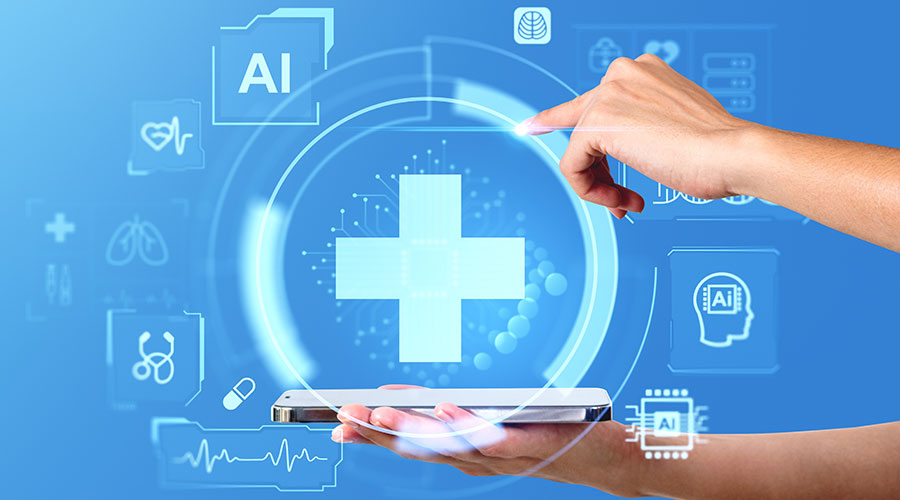As healthcare becomes more digitized, the need for reliable and resilient power delivery and network connectivity has never been greater. The digital enterprise is at the heart of health care operations, spanning systems and networks supporting everything from patient information in electronic health records (EHRs)/electronic medical records (EMRs) and patient archiving and communication systems (PACS), to managing critical assets such as patients and the medical equipment supporting their care. New technologies associated with the Internet of Things (IoT) bring remote asset monitoring to intelligent devices and tools such as real-time location systems (RTLS) using radio frequency identification (RFID) to help track patients and supplies.
Within this mission critical industry, high availability of these applications and systems is the common denominator for success. While all health care organizations have contingency plans to safeguard patients in case of power outages or downtime, it is also important to ensure the entire ecosystem is always on and operational.
Healthcare facilities have an exceptionally low tolerance for power disruptions. Even minor fluctuations can impact sensitive networks and equipment like magnetic resonance imaging (MRI) machines. More extensive power events can impact essential electrical systems (EES) as well as critical ancillary infrastructure systems such as HVAC, communications, records management and security. While organizations are likely using backup solutions for many mission critical applications, uninterruptible power supplies (UPS) can also provide critical emergency power and connectivity to ensure uptime to other areas of the facility. Even where generators are present, a UPS offers bridge power for the time it takes generator systems to come online.
Emerging technology considerations
With the increase in the adoption of digital and connected health technologies, health care facilities now demand even greater system reliability and availability to maintain operational efficiency and ensure patient health and satisfaction. Emerging technologies around systems that support digital patient information such as patient tracking and equipment management are becoming more critical in today’s health care processes. Patients now expect 24/7 availability of these systems. Without backup power, a disruption or outage may cause patient data to be inaccessible or even lost. Security can be impacted, and provider productivity can decrease.
Four key areas related to digitization that all health care facility managers need to factor into their backup plans include:
-
Patient Information (EHR/EMR): EHRs and EMRs electronically store patient data such as registrations, examination reports, test results, billing and access to imaging data from PACS. To access patient data, medical staff must have consistent, quick access to IT systems with the information needed to care for patients. Data center infrastructure such as rack systems, security, IT management software, UPS power and cooling that protect the servers and storage associated with EHR and EMR systems are critical elements in supporting system uptime. The impact of EHR and EMR system outages can be harmful to patients and organizations, especially if backup plans are weak and lack the necessary infrastructure recovery measures.
-
Remote Monitoring and Asset Tracking (IoT & RTLS): These technologies ensure the safety and security of the most vulnerable patients, such as infants, the elderly and those with mental illness. RTLS using RFID and related technologies provide health care facilities with the ability to identify, locate, track and monitor patients, visitors, staff, assets and equipment. The application of RFID and RTLS technologies benefit hospital profitability and patient care in several ways, including improving patient safety and enhancing the quality of care. Also, a growing number of intelligent medical devices are active via IoT. In the event of a system failure or power outage, it is critical to ensure these systems are powered to preserve the security of the facility as well as the safety of patients and staff.
-
Self-service tools: More and more self-help electronic devices are making their way into hospital and clinic waiting rooms. These self-service kiosks and tablets are used for patient check-in, consent forms, copay collection, facility navigation, secure enrollments, scheduling and pre-registration. Another self-service growth area, tele-consultation, provides individuals requiring services with the ability to work with physician’s assistants using video conferencing tools. This allows for quicker and less costly diagnosis of lower severity conditions like the common cold or allergies. As patients become more reliant on and expect quicker service from self-help kiosks, these new tools will require the same high-availability levels as the more traditional core health care systems.
-
Robotics: From personal assistants that help care for patients to surgical assistants, which allow surgeons to perform procedures from a remote location, medical robots are transforming health care. Robots help increase care quality by automating certain procedures and performing activities that cannot be executed by doctors or surgeons due to human limitations. For robots to function safely and effectively within the health care environment, there must be a stable and reliable power infrastructure with backup in place.
UPS implementation in healthcare facilities
UPS systems are a must for all critical systems and networks within a health facility, certifying that applications will not experience downtime. For example, by integrating a UPS as a source of power protection for a self-service kiosk, the UPS ensures a kiosk user can complete a transaction without interruption in the event of an outage. UPS systems provide several benefits to health care facilities, including:
-
Power protection: UPS systems not only protect against utility loss, but when deployed within a facility, they also protect against local interruptions, like issues with circuit breakers, protective relays and even planned maintenance activities. With this, IT solutions and other critical systems remain available and functioning at all times.
-
Power quality: UPS systems also offer the highest quality power to a facility’s systems by providing a local, isolated clean power source, immune to upstream fluctuations and disturbances.
-
Remote management: As they are intended to provide high availability, every modern UPS installation should be monitored either as part of an extended IT/data center enterprise and/or by some type of asset management systems such as a building management system (BMS). Facilities may even ask the manufacturer to monitor them via IoT. This guarantees UPS and battery maintenance will occur on a predictive basis and assures high availability.
To ensure connectivity and functionality to these now-critical and emerging technologies, facility managers should take the following steps:
-
Conduct a risk assessment: Health care facilities are required to conduct risk assessments as part of design and construction and periodically during operations. Particular attention should be given to risks related to power interruptions from the utility and within the facility. Facility managers should perform a variety of assessments to verify that the backup solutions are adequate alternatives for power in the event of outages. Hazard assessments allow facility managers to identify which areas of the facility are most prone to danger, while a disaster recovery assessment tests the adequacy of backup procedures and emergency response planning in the case of a disaster event. Facility managers will want to conduct regular power assessments that measure the effectiveness of backup power systems, primary power source reliability, power routing diversity, connector systems and other energy reliability factors.
-
Validate and test emergency systems (emergency power supply system (EPSS)/essential electrical systems (EES)): As health facilities employ generators and UPSs to maintain power in the event of a disruption, it is critical these backup solutions be properly validated and tested to ensure efficiency. Systems are available to monitor and record parameters, status and functionality for EPSS and EES. Regulatory compliance for these systems is most often met with generators, but where to supplement with UPS systems should be an outcome of the risk assessment. In cases where UPS systems are supplementing generators, only a short duration of bridge power may be needed from the UPS. In higher load situations, this would still require a relatively large bank of batteries to source the power needed using traditional battery technology. Health care facilities have looked at alternative storage technologies like flywheels for this situation, and more and more lithium ion battery technology meets the same expectation in terms of footprint and total cost of ownership.
-
Evaluate disaster preparedness: Health facilities, particularly those in areas susceptible to natural disasters, will want to take extra precautions to ensure electrical systems are protected in the event of an outage. While nothing can stop a hurricane, tornado or other catastrophic event from happening, protecting electrical equipment from the damage of these disasters is possible. Article 708, Critical Operations Power Systems (COPS), of NFPA 70 National Electrical Code (NEC) requires mission critical facilities with a higher level of protection, so that in the event of an emergency, these facilities will remain operational.
-
Maintain foundational electrical systems: Implementing a strategy in which electrical system maintenance is routinely performed provides long-term ROI by helping avoid potential system failures. Maintenance strategies can be aided by implementing technologies like building management systems (BMS) that help to monitor building performance by collecting and analyzing data from electrical, HVAC, security and IT systems to improve reliability and efficiency. Additionally, modernizing aging electrical gear can guard against the risks to continuity of services and power reliability that older, out-of-date equipment can present.
Conclusion
Emerging technology will continue to be vital to delivering exceptional patient care. Hospital safety systems and patient data technology have all become integral parts of a health care institution. With these technologies affecting how care is delivered, hospitals have a responsibility to ensure they provide continuous, uninterrupted power for critical equipment throughout the entire facility infrastructure and its associated IT systems. Coordination is needed among facilities and IT staff to ensure power supplies maintain connectivity. By modeling power infrastructure to sustain connectivity, hospitals can greatly improve patient outcomes, decrease readmissions and reduce hospital expenses.
Dan McGinn is Director of Secure Power Systems at Schneider Electric.

 UF Health Hospitals Rely on Green Globes to Realize Their Full Potential
UF Health Hospitals Rely on Green Globes to Realize Their Full Potential How Healthcare Facilities Can Be Truly Disaster-Resilient
How Healthcare Facilities Can Be Truly Disaster-Resilient TriasMD Breaks Ground on DISC Surgery Center for San Fernando Valley
TriasMD Breaks Ground on DISC Surgery Center for San Fernando Valley Bigfork Valley Hospital Falls Victim to Data Breach
Bigfork Valley Hospital Falls Victim to Data Breach AI-Driven Facilities: Strategic Planning and Cost Management
AI-Driven Facilities: Strategic Planning and Cost Management